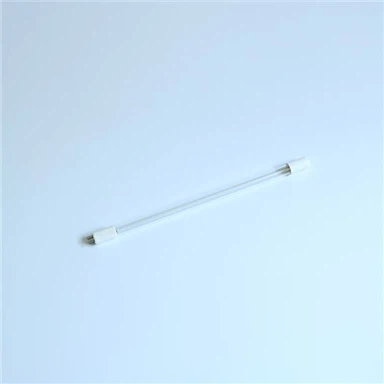Germanium Window For Infrared Optics
Germanium is a highly versatile IR material that provides essential benefits for instrumentation and applications requiring broad IR transmission and durability. However, potential drawbacks, like high density, cost, and oxidation sensitivity, must also be considered based on the demands of...
- Fast Delievery
- Quality Assurance
- 24/7 Customer Service
Product Introduction
Germanium is a highly versatile IR material that provides essential benefits for instrumentation and applications requiring broad IR transmission and durability. However, potential drawbacks, like high density, cost, and oxidation sensitivity, must also be considered based on the demands of specific IR systems and uses. When properly selected and applied, germanium optics with germanium window deliver high performance and reliability for IR applications where most alternative materials cannot meet requirements.
We offer high-quality germanium optical windows ideals for infrared applications requiring maximum transmission and bandwidth where other materials fall short. Our germanium optics provide unmatched Infrared transmission, superior multi-spectral imaging, advanced IR applications, and premium quality.
Our germanium window manufacturing capabilities have been honed over 20 years to optimize the utility of germanium for cutting-edge IR systems. We understand how to fully exploit its benefits while mitigating shortcomings like oxidation sensitivity or cost through exacting fabrication, finishing, and metrology standards. The result is germanium optics providing peak performance, maximum usable specifications, and value pricing enabling even the most ambitious IR programs. Please contact us today to discuss how our germanium optical windows can enhance your system’s IR capabilities!
Features
- High IR transmission
- Freedom from defects
- Low scatter
- Dimensional stability
- AR coatings
- Permanent anti-reflection surface
Parameters
|
Product name |
Germanium Window |
|
IR transmission |
1 μm to 14+ μm |
|
Scatter |
<3% |
|
Dimensional stability |
<20 ppm/°C |
|
AR coatings |
2-layer MgF2 |
|
Surface quality |
10-5 S/D or better |
Spectrum Transmission Curve

Application
The main applications of germanium optics result from its unique combination of broad infrared transmission range, durability, and ability to be polished to precision surface figures. These properties allow germanium optical windows and components to serve in demanding IR imaging systems, laser and spectroscopy equipment, space-based sensors, military technology, and other uses at the forefront of infrared science and applications where most other materials would fall short in performance or capabilities.
- Infrared lenses
- Infrared beamsplitters
- Infrared detectors
- Substrates for IR coatings
- Infrared crystal optics


What is the optical window?
An optical window is a transparent material that allows light to pass through while protecting or separating the interior of an optical system. Optical windows have a few essential purposes:
• They keep contaminants out of an optical device or instrument while still allowing light to transmit. Windows help maintain a controlled environment within an optical system.
• They act as barriers between different mediums, such as air and vacuum or liquids. Windows enables light to pass between mediums of other refractive indices.
• They block specific wavelengths of light while allowing others to transmit. For example, UV-blocking windows are used to filter out ultraviolet radiation. Infrared windows share IR light but block visible wavelengths.
• They help maintain pressure differentials between the inside and outside of an optical system. Windows must be strong enough to withstand pressure without breaking.
• They provide structural support and protection for more fragile optics like lenses or detector arrays within a system. The window takes the impact of any outside mechanical forces.
Some essential characteristics of optical windows include the following:
• Transmission range - The range of wavelengths that can pass through the window. The transmission should be high for wavelengths of interest and low for others.
• Refractive index - Should be close to that of the medium on either side of the window. Significant differences in refractive index can cause undesirable reflection and refraction.
• Durability - Must withstand relevant environmental conditions like temperature extremes, radiation exposure, humidity, abrasion, etc., without degradation.
• Surface quality - Windows should have highly polished, parallel optical surfaces to minimize scattering and aberration. Surface accuracy depends on the precision of the visual system.
• Coatings - Anti-reflection coatings are often applied to reduce reflection losses. Other filtration, heating, and electromagnetic shielding coatings may also be used.
• Dimensional stability - Windows should maintain their shape and dimensions over temperature changes to avoid focusing or alignment issues. Low thermal expansion is desirable.
• Strength - Strong enough to withstand pressure differentials and physical impact without breaking. Strength depends on factors like thickness, diameter, and material.
• Cost - Although optical materials tend to be expensive, optical windows should provide a reasonable cost for their level of performance in a given application. The price depends on size, material, surface finish, and coatings.
Common optical window materials include germanium windows, fused silica, sapphire, various crystals, borosilicate glasses like BK7, and polymers such as CR-39 or polycarbonate. The choice of window material depends on properties like transmission range, durability, refractive index, and required strength for its application. Windows must suit the environmental conditions they will be exposed to within a system.
Hot Tags: germanium window for infrared optics, China, suppliers, manufacturers, factory, customized, wholesale, bulk, pricelist, in stock, for sale
No Information
No Information










